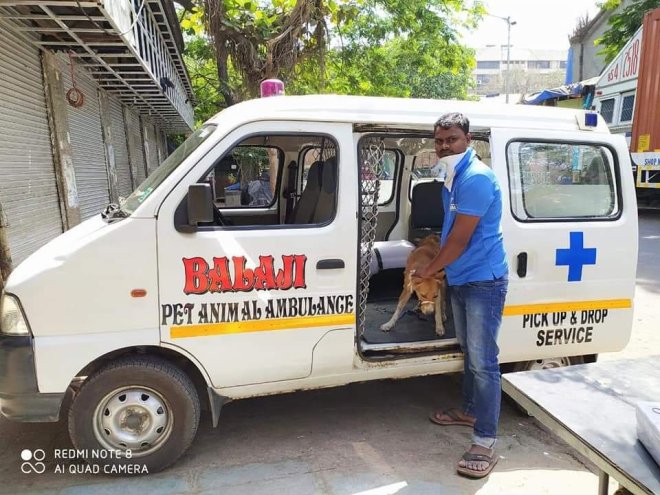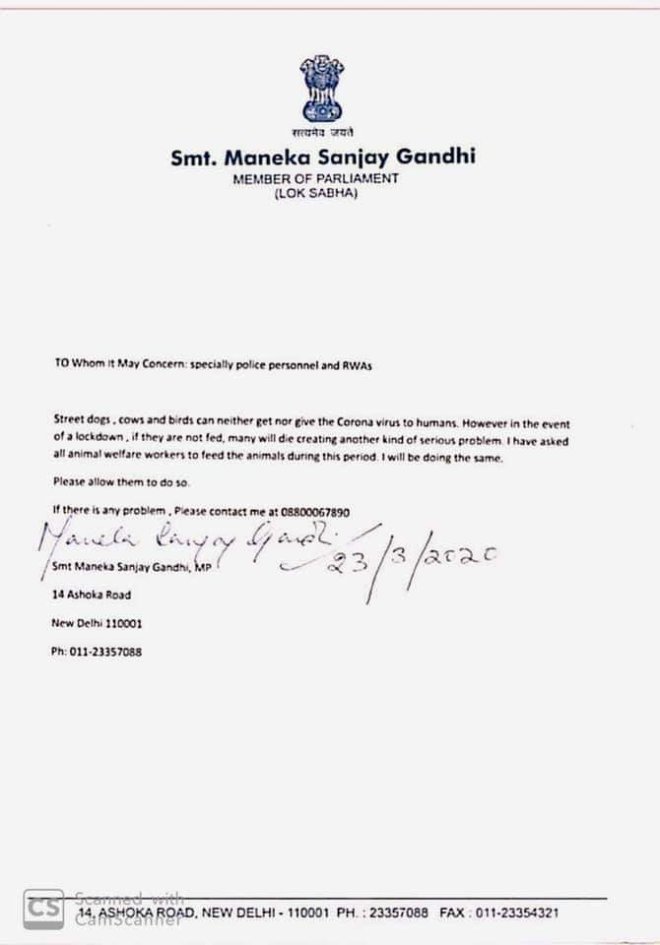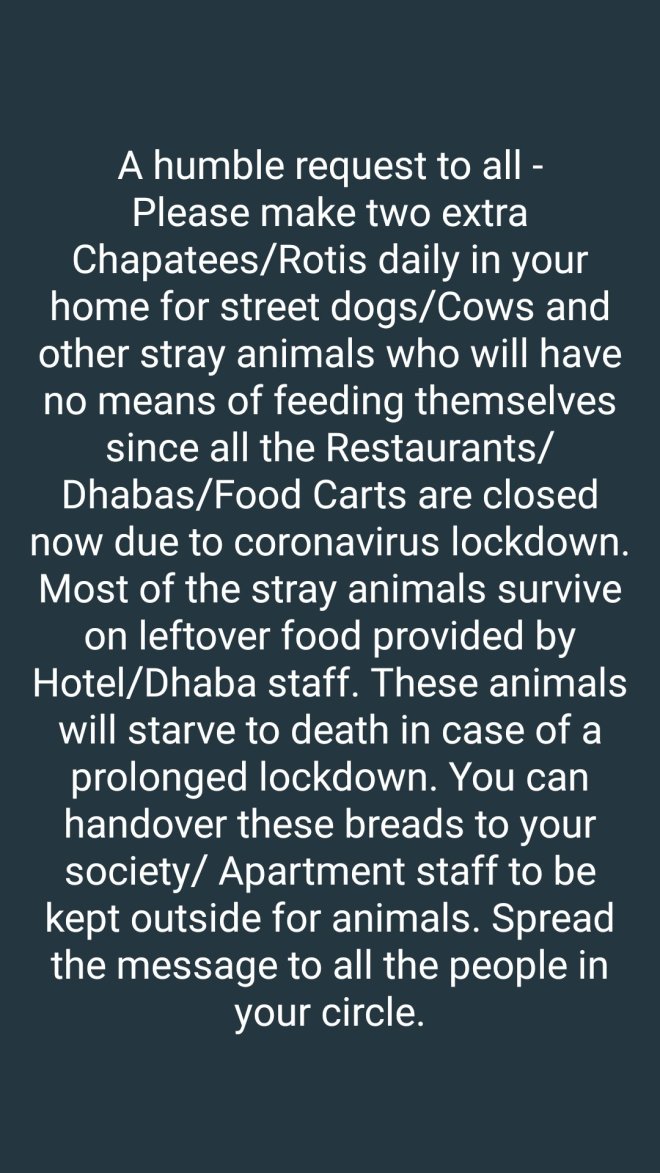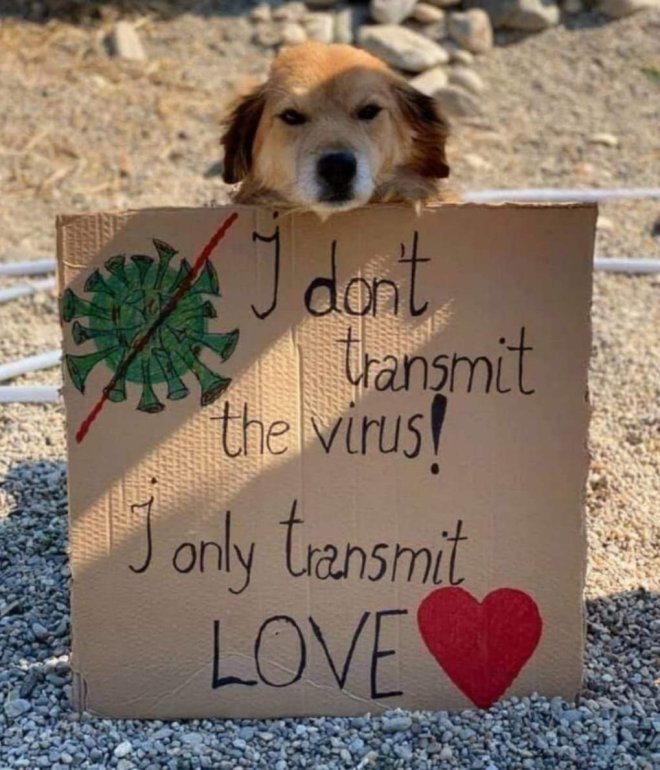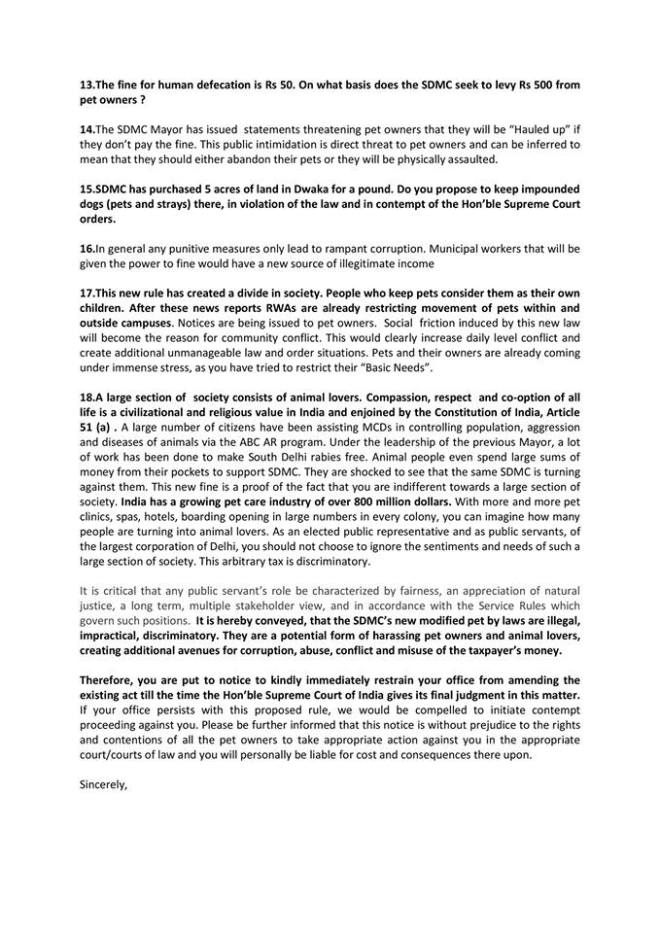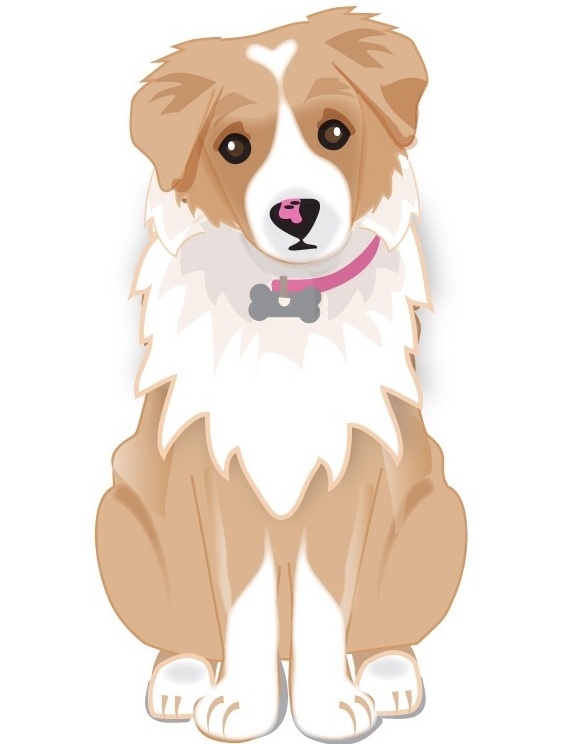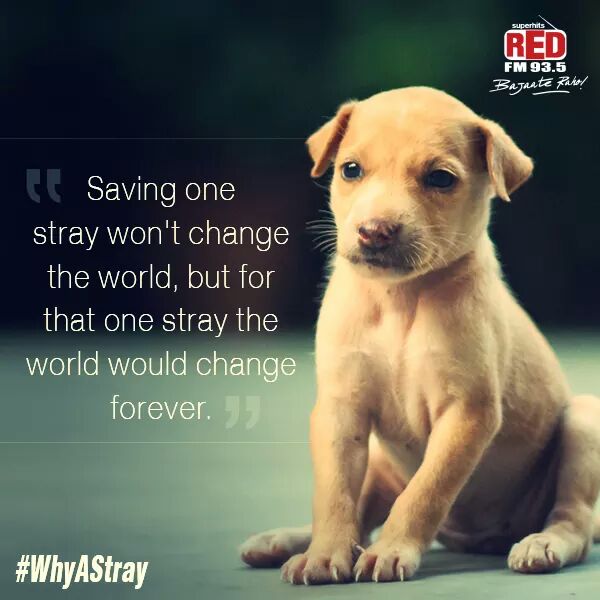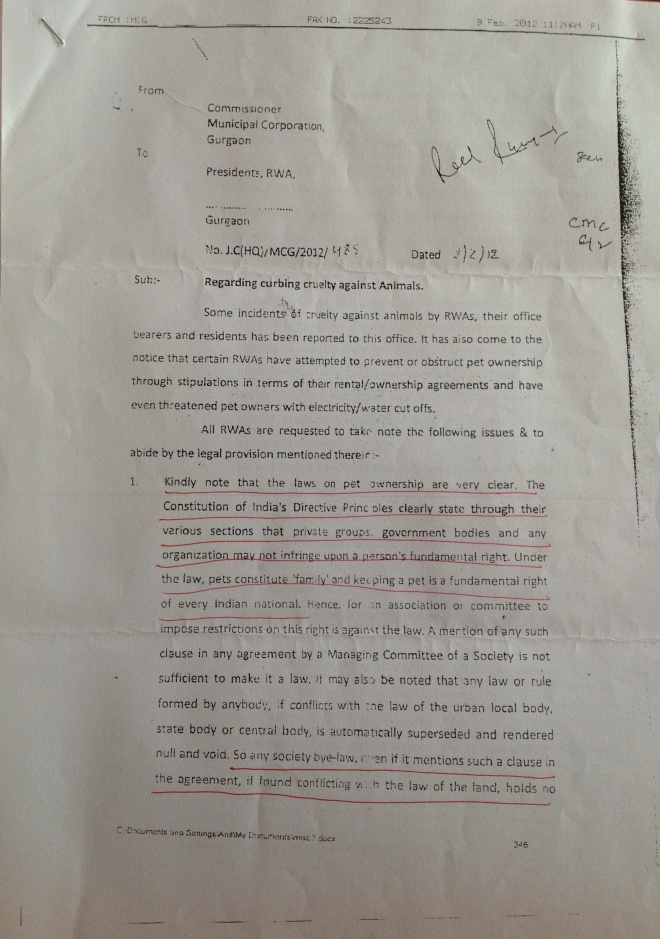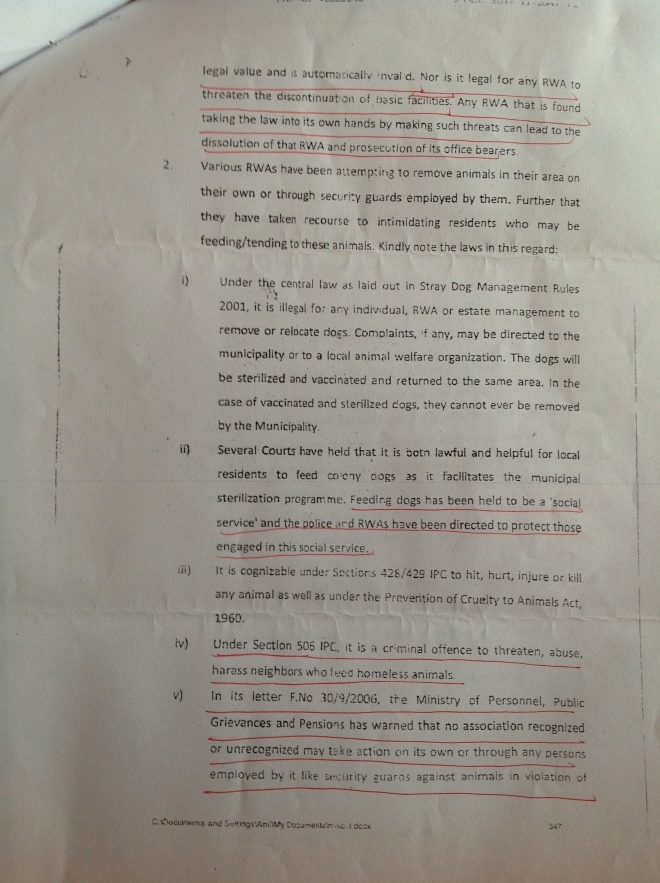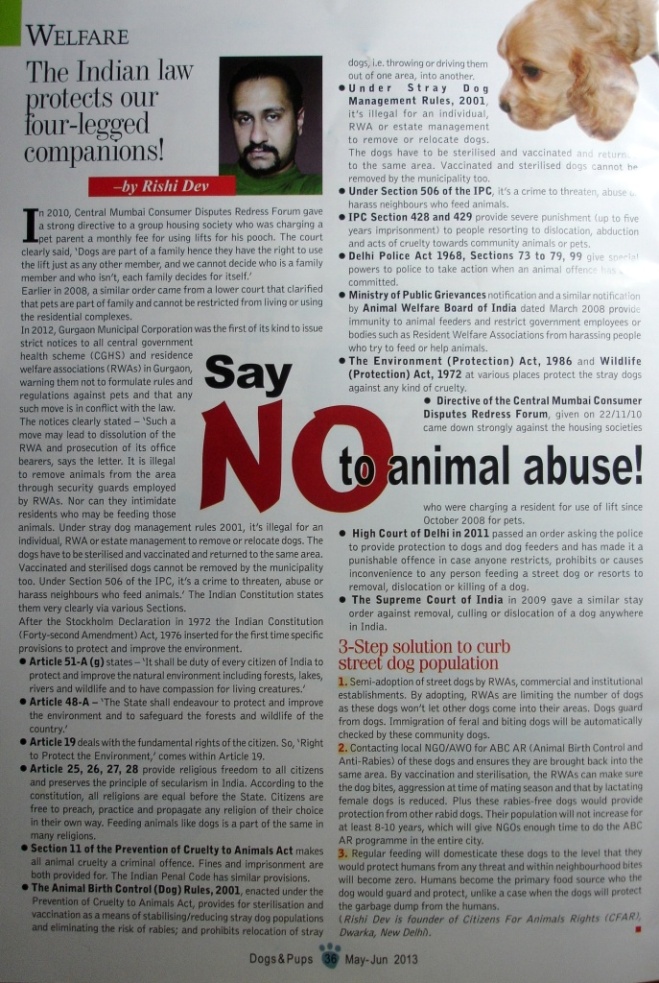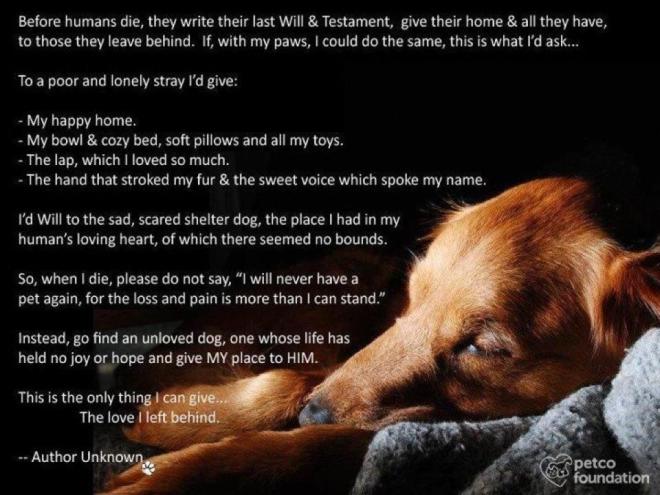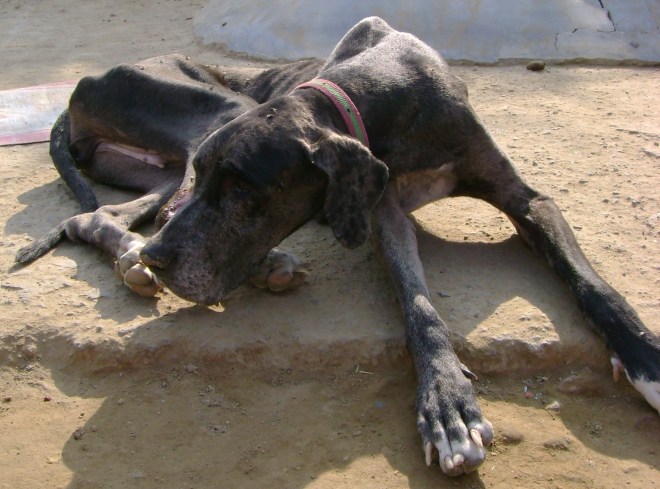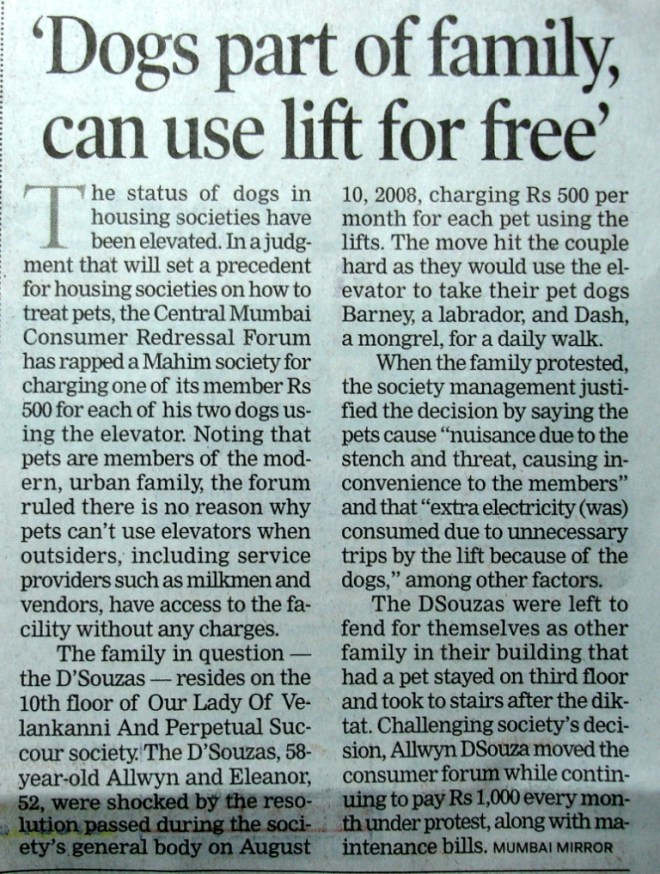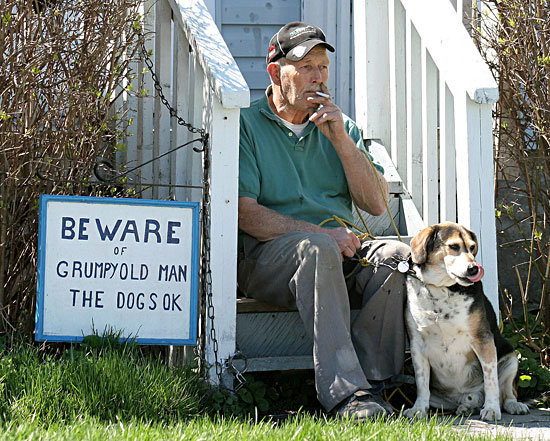Below is an article written by Mrs. Maneka Gandhi, who is the Chairperson of an organisation called, ‘People for Animals’. We happened to receive a copy of it in our Inbox from a fellow animal rescuer and deem it wise to share it on this blog of ours, since a lot of our helpline calls and e-mails are related to this subject.
———————————————————————————————
In recent times, RWAs, Apartment Owners’ Associations, and Cooperative Group Housing Societies, having taking to imposing various restrictions on pet owning residents, such as disallowing the use of lifts, or parks, by pets, or even banning pets altogether. There is widespread resentment against these moves, because not only do they unreasonably restrict the rights of residents, they are also unlawful and against recent court rulings.
Moreover, as an RWA, or an Apartment Owners’ Association, Cooperative Group Housing Society, gated complex, etc., you may often be getting complaints regarding street dogs, and requests that they be driven away, through beatings by security guards or otherwise, or just dumped elsewhere. If you accede to these requests, you will not only be violating laws and pronouncements of courts, but will not achieve any permanent solutions either. The problem will remain a perennial problem ; and you will also run afoul of animal welfare people that are increasing in number by the day, and banding themselves into well organized groups.
Below, are some DOs and DON’Ts, with respect to both, PET DOGS & STREET DOGS.
I. WITH RESPECT TO PET DOGS & PET OWNING RESIDENTS :Please keep in mind that the following is what you CANNOT do :-
BANNING pets, whether allowed :
a) Even by obtaining consensus, or even if the majority of the residents want it, you cannot legally introduce any sort of ‘ban’ on the keeping of pet dogs by residents.
b) Even by amending bye-laws or regulations or otherwise, such a ‘ban’ cannot be put into place since it is illegal, and does not have the sanction of law. In fact, in trying to ‘ban’ pets, or limit their number, you interfere with a fundamental freedom guaranteed to the citizens of India, i.e. the freedom to choose the life they wish to live, which includes facets such as living with or without companion animals.
c) If the residents that have pets are not violating any municipal or other laws, you cannot object. The general body cannot frame or amend bye-laws that are at variance with the laws of the country. Even by a complete majority, a general body cannot adopt an illegality. Please remember, you do not have the right to legislate, and ‘lay down law’ for residents, and apartment owners or even tenants.
Use of LIFTS by pets :
d) There is a court ruling to the effect that pets cannot be disallowed from the use of lifts ; and no charges can be imposed either, by housing societies for the use of lifts by pets. In fact, it was widely reported in the news that the concerned court had ruled that “Dogs are family, can use lifts for free”. Kindly ensure that this sort of restriction is not therefore imposed – neither a ban, nor any special charges for the use of lifts by pets.
Use of PARKS by pets :
e) Banning pets from gardens or parks, is short-sighted. Firstly, you may or may not own the garden or park in question. It may be an MCD or DDA park, or belong to any other organization. Secondly, pets that are not properly exercised may show aggression in frustration ; and that, surely, cannot contribute to the benefit of the residents. It may be better to fix timings when pets can be walked without inconvenience to other residents. These timings can then be intimated to the general body.
Use of leashes/muzzles by pet owners, defecation by pets in community premises, imposition of fines and other similar measures :
f) You can request pet owners to keep their pets on leash, when walking them in common areas. You cannot however ask for muzzles as muzzles are illegal for sustained use as dogs die through overheating. Please remember, the law already provides for penalties for negligent pet owners, which the aggrieved parties can avail of.
g) In the absence of central or state laws requiring cleaning of pet poop by pet owners, you cannot impose any rule, regulation or bye-law, with respect to mandatory cleaning of pet poop, or impose special charges or fines on pet owners. You can, of course, request them to do so.
h) You can also experiment with the creation of various pet defecation areas within community premises, which is what some housing societies and sectors are doing. These can be imaginatively spaced out within the precincts, and you can request pet owners to train their pets into using the same. You cannot however impose fines and special charges of any kind on pet owners, because there is no mandate in law for the same.
Intimidation :
i) Lastly, please also always bear in mind that if any association succeeds in intimidating a pet owner into ‘giving up’ or ‘abandoning’ a pet, it will actually have contributed to a violation of law ; and may well be aggravating the menace of ownerless animals on the street, that are not accustomed to living on the street and therefore get involved in and lead to accidents, injuries and deaths. Please also bear in mind that intimidation is an offense in law.
II. WITH RESPECT TO STREET DOGS :What you CANNOT do :-
1) Beating and driving away street dogs, NOT ALLOWED ; animal birth control and release back into same locality/territory, ALLOWED :
As per Indian law street dogs (i.e. stray dogs) cannot be beaten or driven away or dumped elsewhere or killed. They can merely be sterilized in the manner envisaged in the Animal Birth Control (Dogs) Rules, 2001, vaccinated, and then returned back to their original locations. For the area-wise sterilization program that the law mandates shall be followed, dogs have to be returned back to their original habitat after sterilization and immunization.
2) The rationale behind release into the same locality/territory :
Dogs, being territorial in nature, tend to fight off other dogs, and keep them from entering their territories ; and in this manner, the dog population in each territory / within each locale, stabilizes.If, however, they are removed permanently, other dogs come into the ‘dog-free’ vacuum that is thereby created. So the ‘problem’ continues.
3) Street dog feeding, whether inside or outside community premises :
There is no law that prohibits the feeding of street animals.Citizens who choose to do so are in fact performing a duty cast upon them by the Constitution of India – of showing compassion to all living creatures. As recently as the 12th of December, 2011, stray dog feeding has been upheld yet again by the High Court, and the emphatic challenge to the same by one R.W.A., disregarded.
4) Animal cruelty :
Please also note, animal cruelty is an offence – under Section 11 of the Prevention of Cruelty to Animals Act, and Section 428 of the Indian Penal Code –punishable with imprisonment and fine.
5) Intimidation :
Attempts to interfere with, or harass persons who choose to tend to and feed community dogs, maybe tantamount to the very grave offence of criminal intimidation.
6) Aggression to dogs, counter productive :
Last but not the least : any aggression or hostility that the dogs may be subjected to, will only render them aggressive, and hostile to humans. They may then resort to snapping and biting in self -defense. If the same happens, the human aggressors shall be the only ones to blame.
